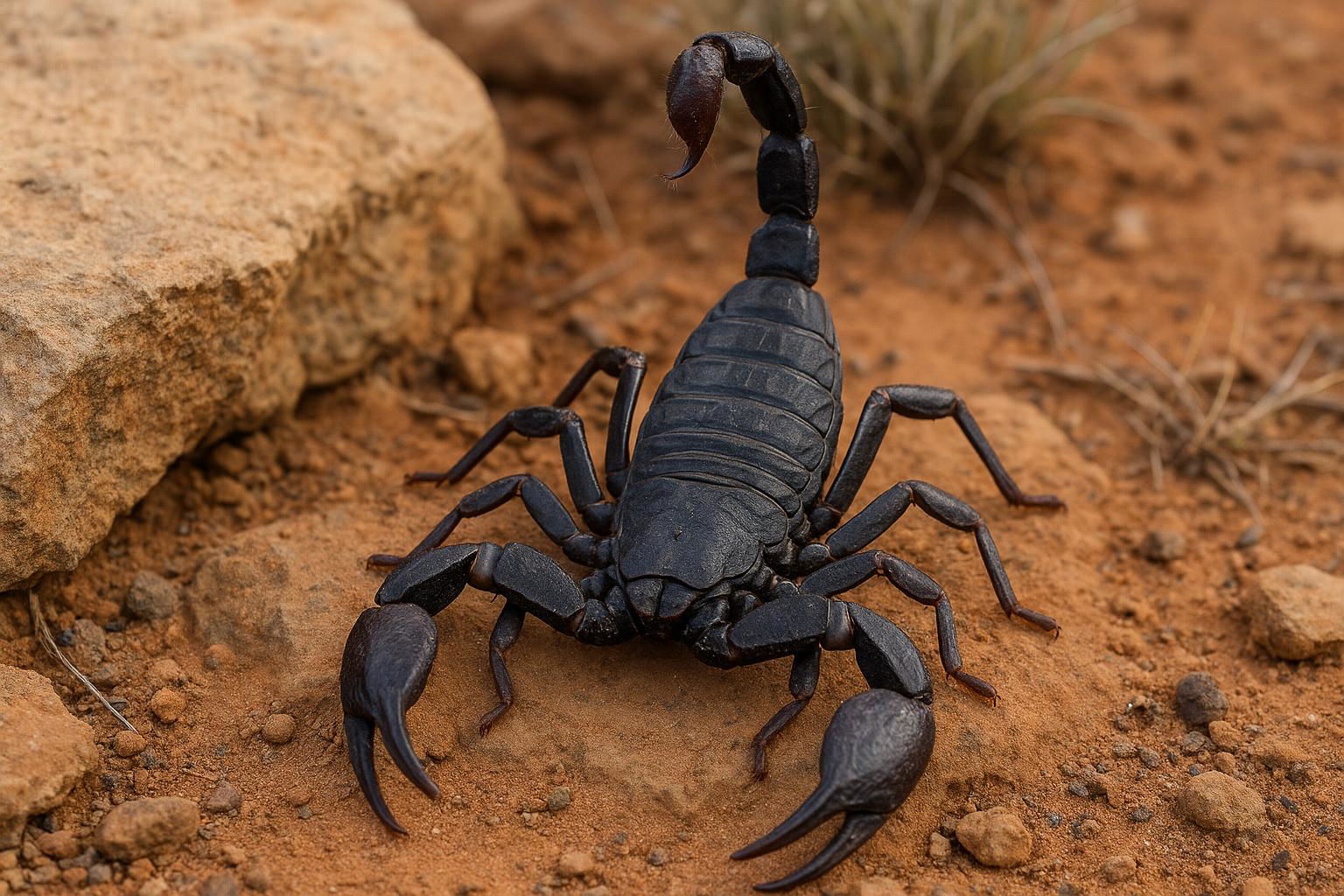
Giant Flat Rock Scorpion
Hadogenes troglodytes
The Giant Flat Rock Scorpion, scientifically known as *Hadogenes troglodytes*, is a fascinating arachnid native to the rocky terrains of southern Africa, particularly in regions such as South Africa, Mozambique, and Zimbabwe. It is one of the longest scorpions in the world, with individuals often reaching lengths of up to 20 centimeters (approximately 8 inches). This scorpion is easily recognized by its slender, flattened body and extraordinarily thin pincers, adaptations that enable it to navigate and hide within narrow crevices of rock formations where it spends most of its time.
Despite its intimidating size, the Giant Flat Rock Scorpion's venom is relatively mild compared to other scorpion species, posing little threat to humans. Its diet primarily consists of small insects and other arthropods, which it hunts using its keen sense of vibration and touch rather than relying on venom to subdue prey.
Characterized by its dark coloration, often ranging from shades of brown to black, this scorpion plays a vital role in its ecosystem as both a predator and prey. Its unique ability to flatten its body allows it not only to evade predators but also to withstand the harsh environmental conditions of its rocky habitat. As a species, it is a remarkable example of evolutionary adaptation and resilience, captivating arachnid enthusiasts and researchers alike.

 All Species & Breeds
All Species & Breeds
 Highland Cattle
Highland Cattle
 Miniature Donkeys
Miniature Donkeys
 All Species Directory
All Species Directory
 Highland Cattle in Virginia
Highland Cattle in Virginia
 Miniature Donkeys in Texas
Miniature Donkeys in Texas












